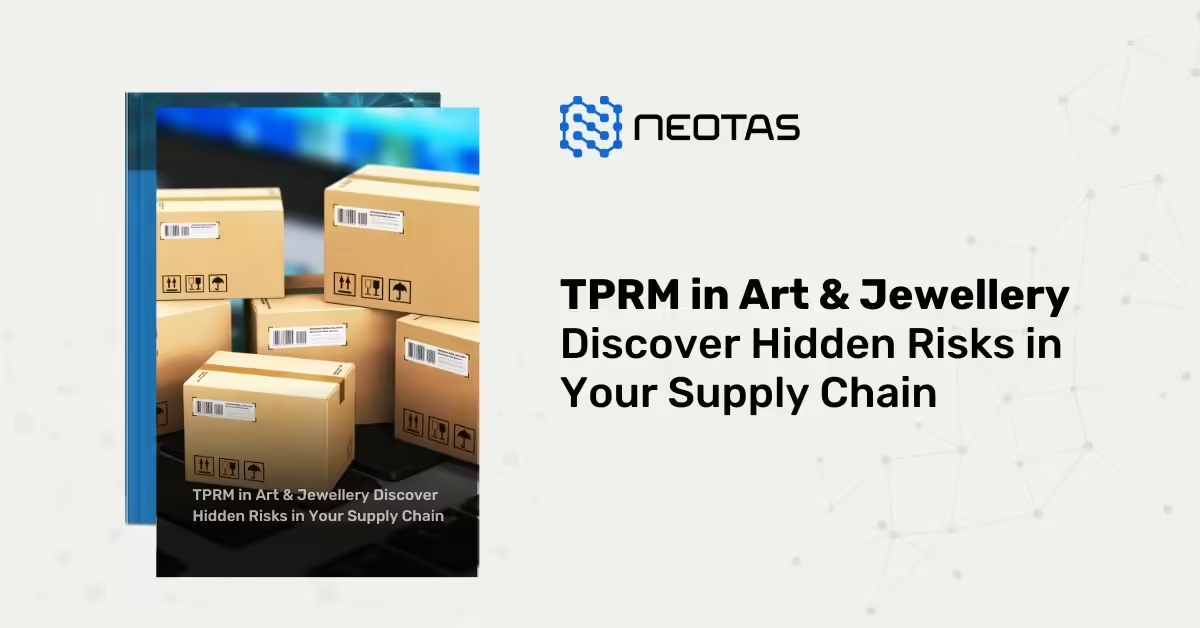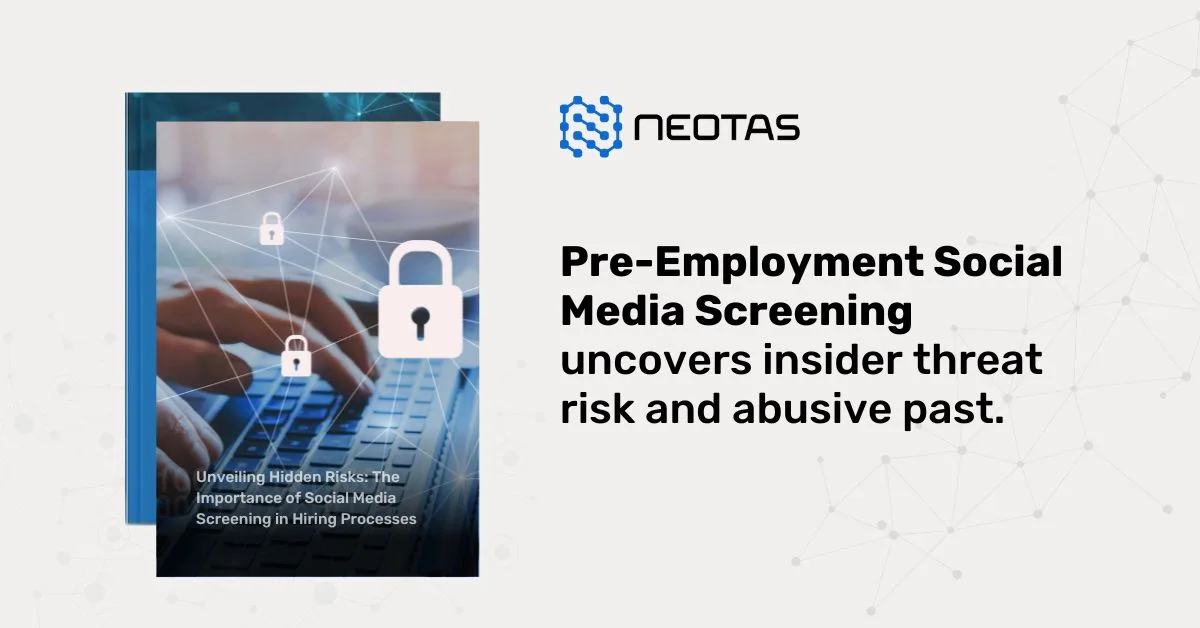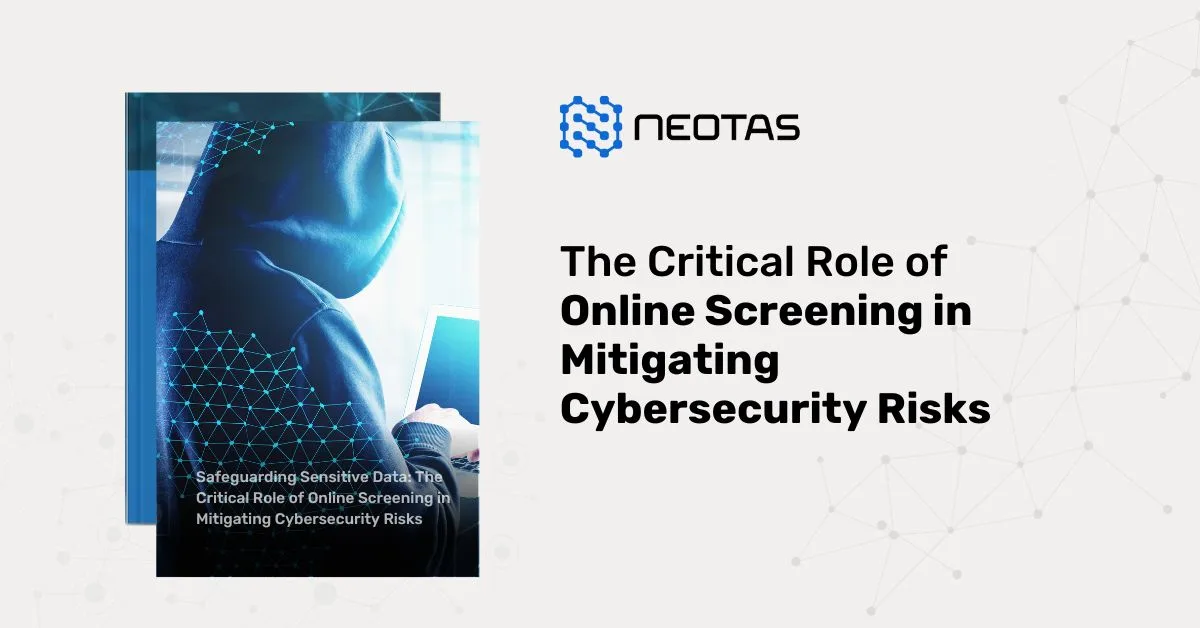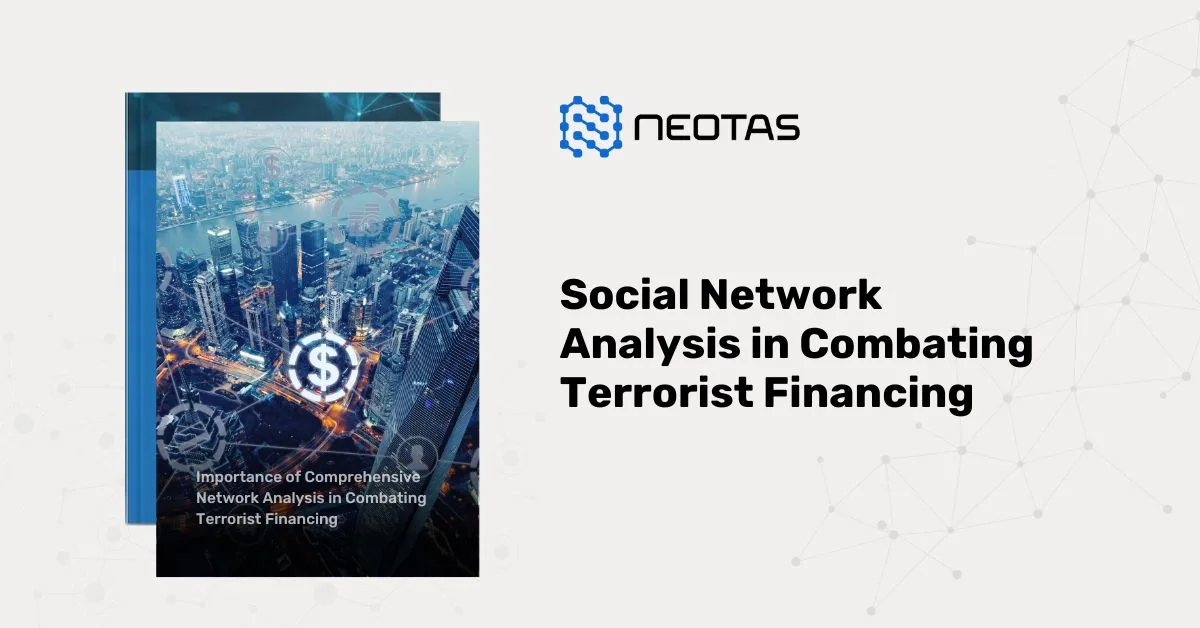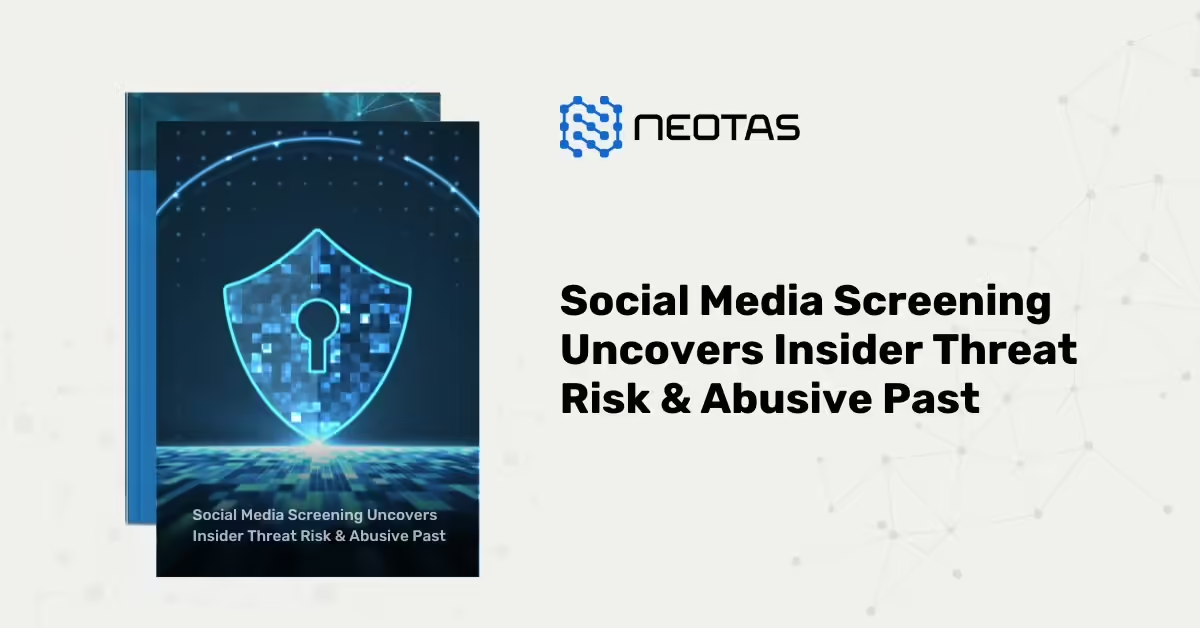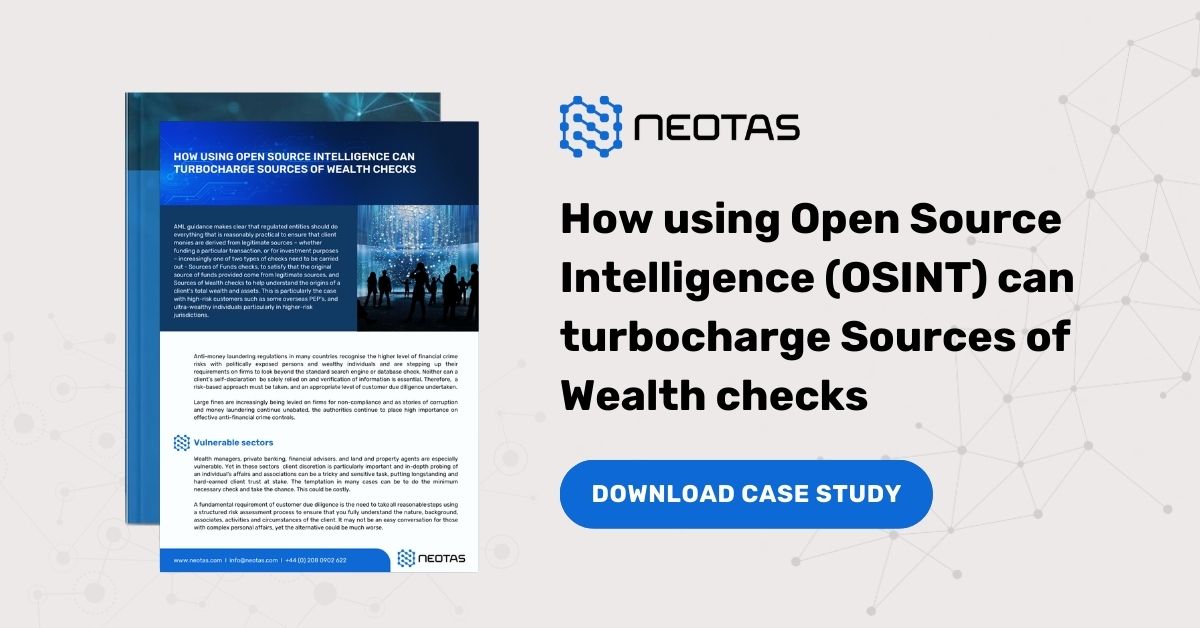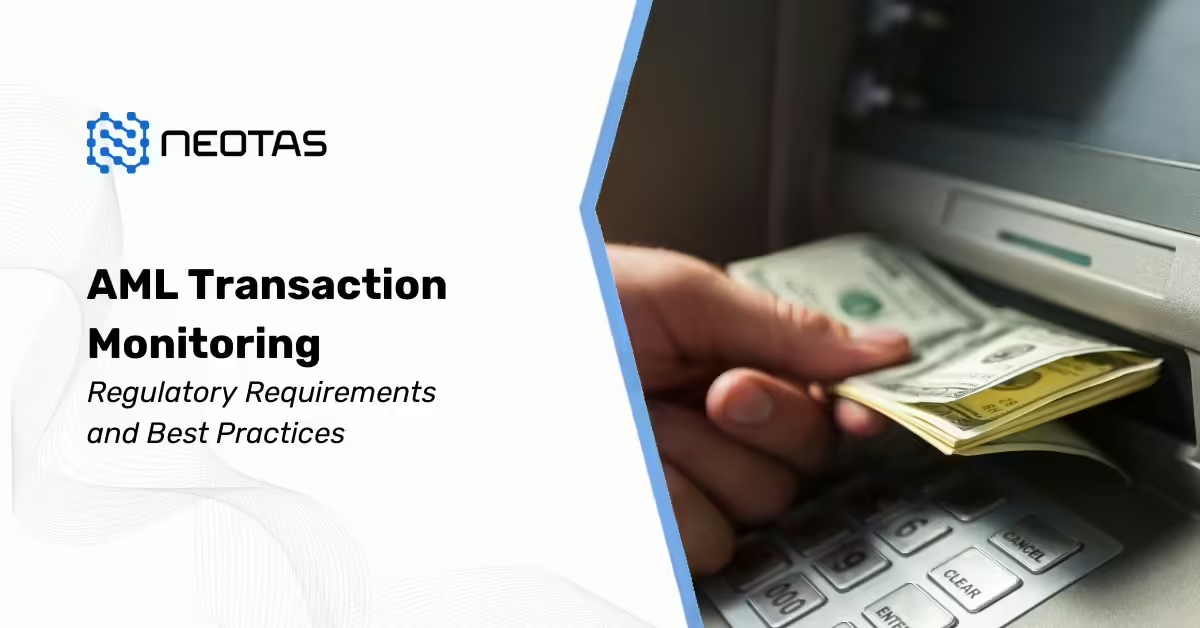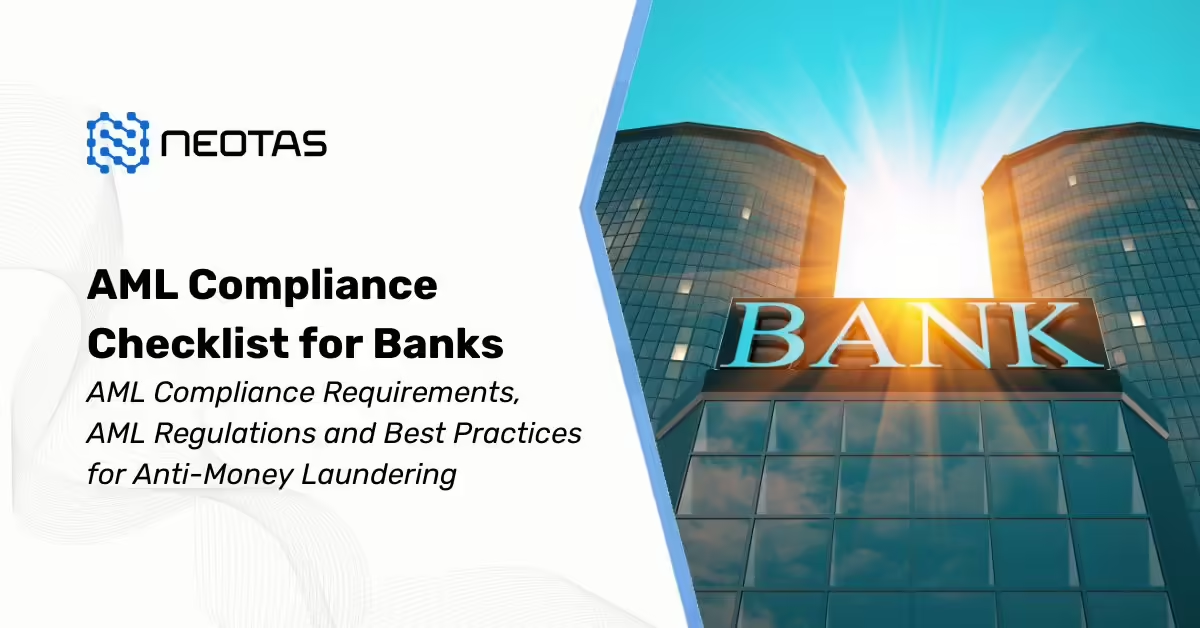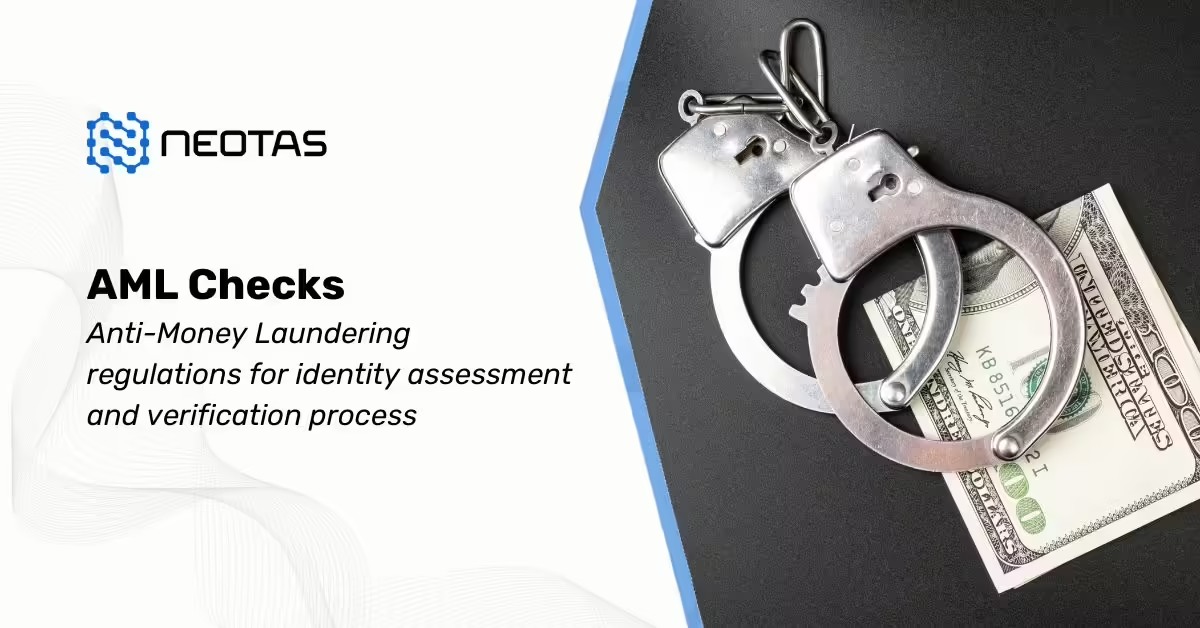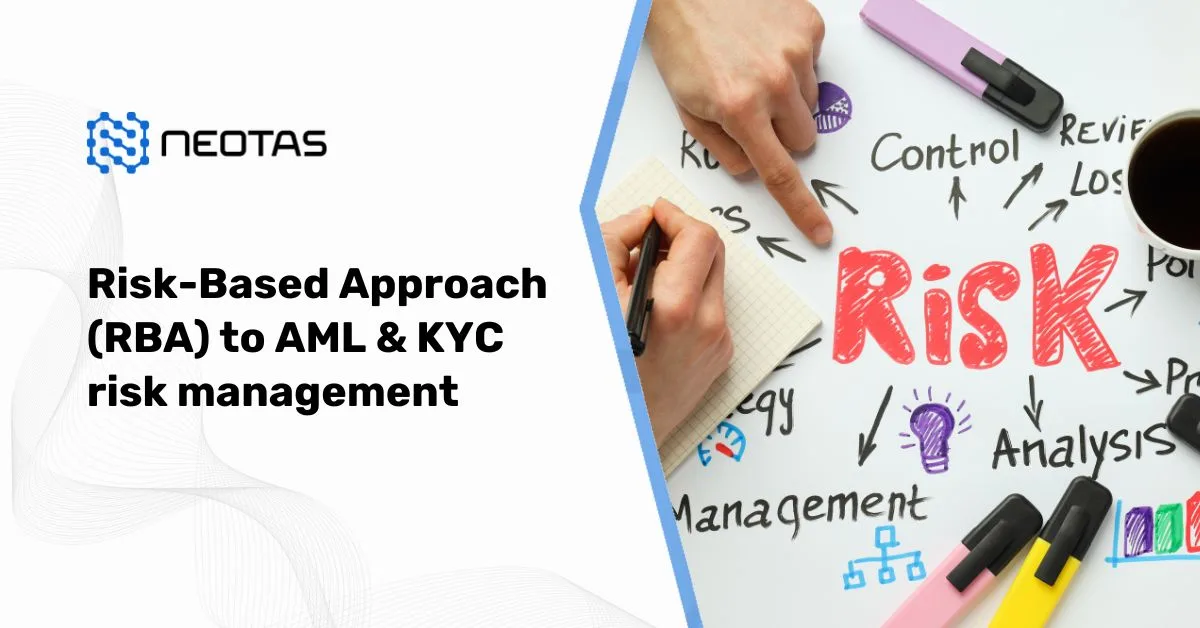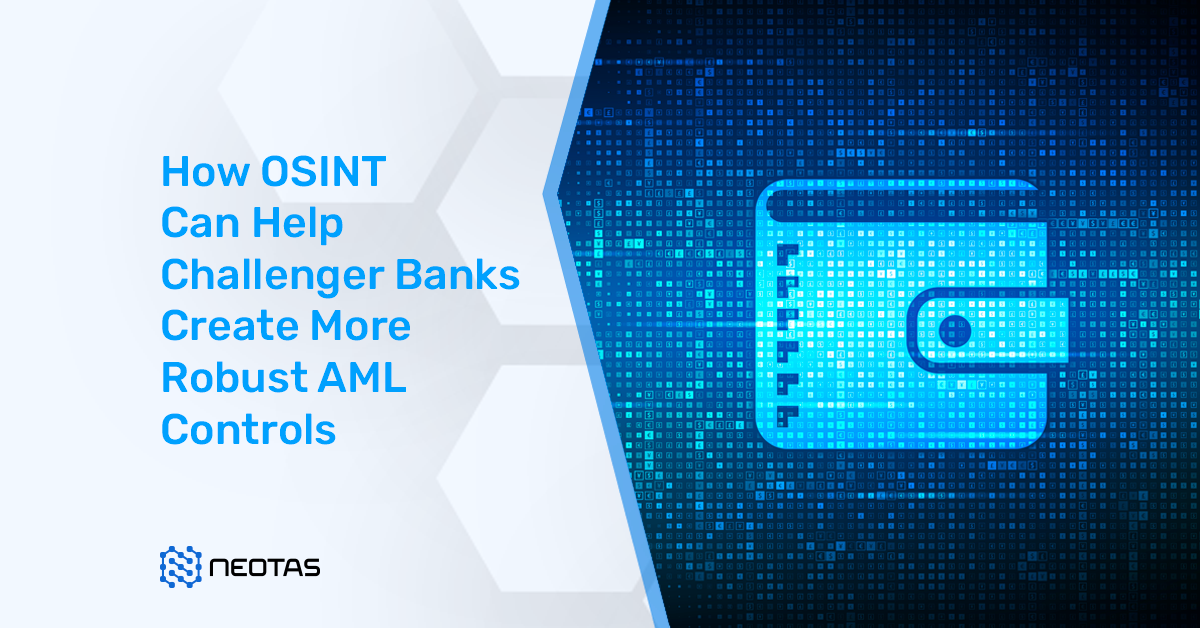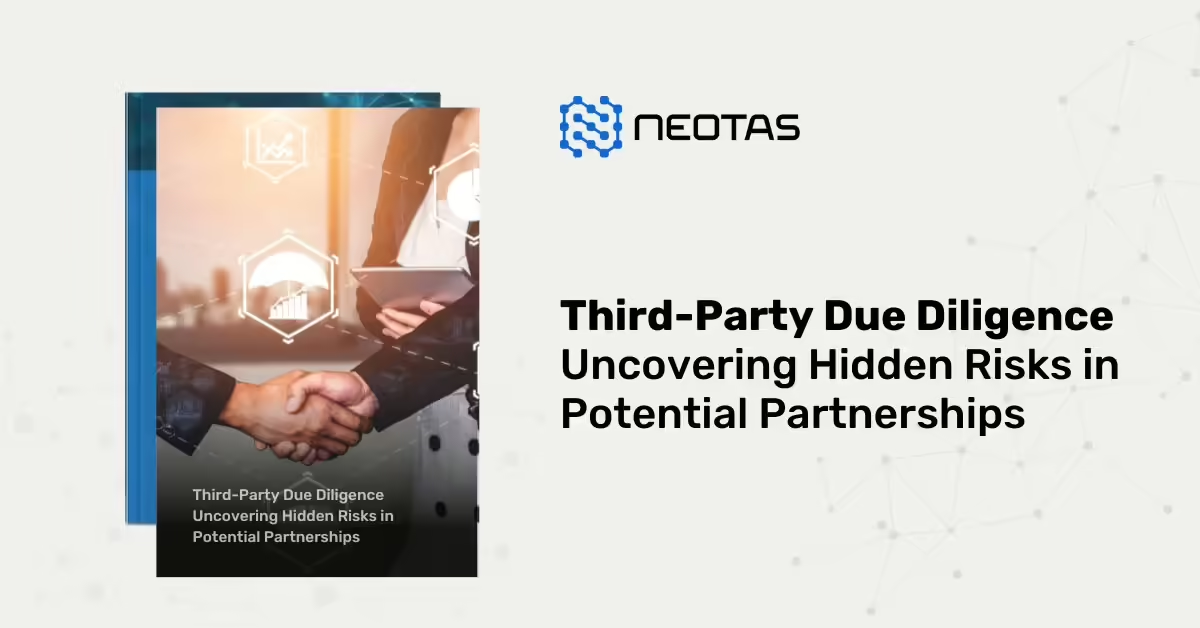
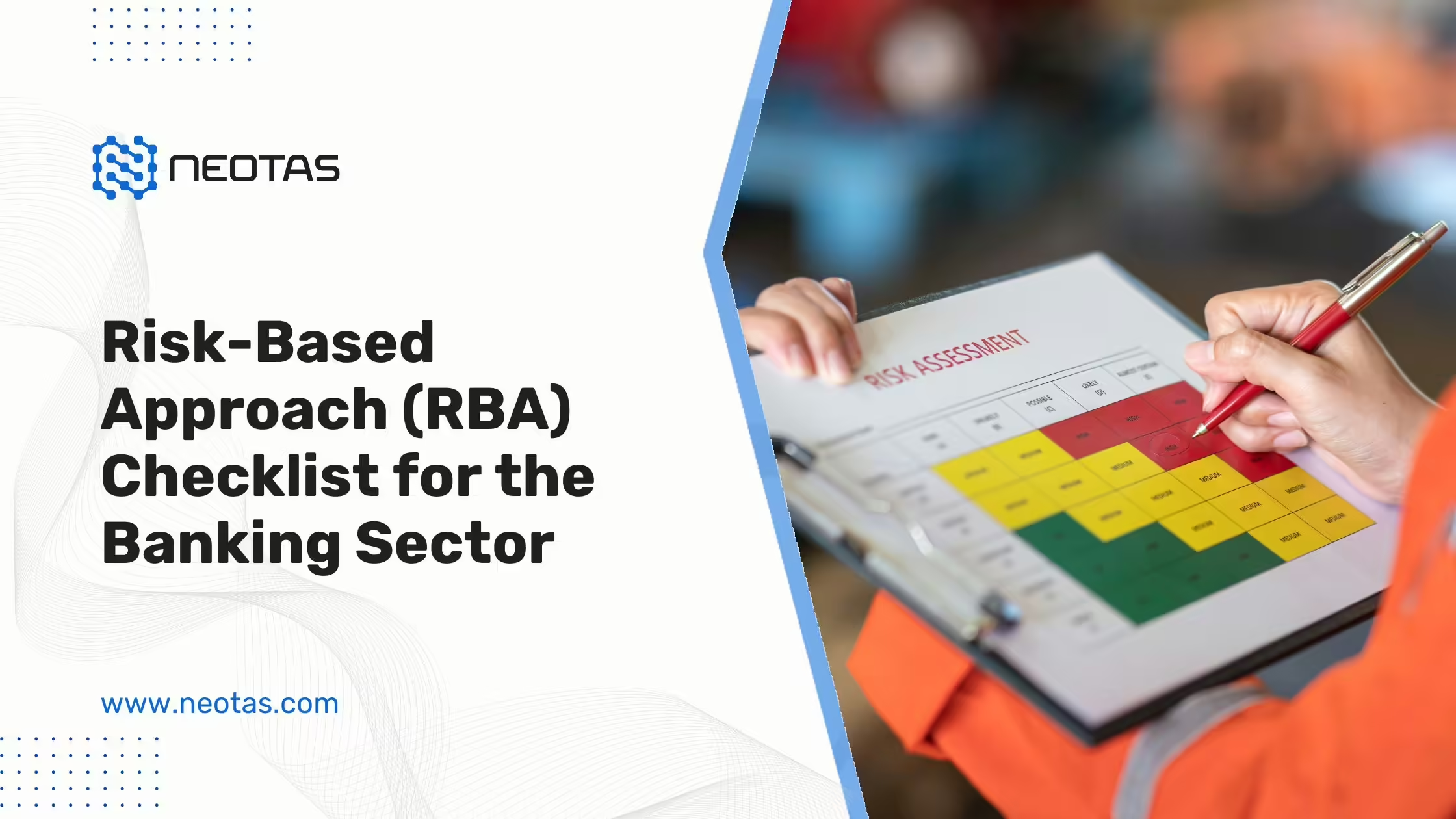
Risk-Based Approach Checklist for Banking Sector
In today’s heavily regulated and ever-evolving banking sector, the need for robust, adaptive risk management has never been greater. The Risk-Based Approach (RBA) Checklist for the Banking Sector is an essential tool for any institution aiming to strengthen its compliance, mitigate risks associated with financial crime, and enhance overall governance practices. This comprehensive guide provides actionable steps for implementing an RBA, with a focus on tailored, risk-sensitive compliance processes.
A structured, risk-based approach empowers banks to protect their assets, customers, and reputation. It also ensures efficient allocation of resources, enabling institutions to respond swiftly to regulatory changes and emerging risks. Our downloadable RBA checklist is not just a tool; it’s a strategic asset, equipping you with a clear pathway to optimised risk management in line with both local and global regulations.
What is a Risk-Based Approach (RBA) in Banking?
An RBA involves tailoring compliance efforts to align with the specific risks faced by an institution. Rather than applying uniform policies across all areas, an RBA allows banks to allocate resources efficiently, focusing on high-risk areas that require more attention and monitoring. Read more on our RBA Checklist Guide.
Understanding Risk in Banking
1. Risk Avoidance Definition
Risk avoidance is a strategy where banks take proactive measures to eliminate exposure to potential financial, regulatory, or operational risks. This could involve discontinuing high-risk business activities, restricting services to certain regions, or refusing to onboard clients with excessive risk profiles.
2. AML in Banking
AML (Anti-Money Laundering) in banking refers to a set of laws, regulations, and procedures designed to prevent criminals from disguising illegally obtained funds as legitimate income. Banks and financial institutions implement AML measures to detect, report, and prevent financial crimes such as money laundering, fraud, and terrorist financing.
Key Components of AML in Banking:
Know Your Customer (KYC): Banks must verify customer identities, understand their financial activities, and assess the risk of money laundering.
Transaction Monitoring: Automated systems track customer transactions to identify suspicious activities, such as large cash deposits, rapid movement of funds, or unusual cross-border transactions. Read more on AML Transaction Monitoring.
Suspicious Activity Reports (SARs): If a bank detects potentially illegal activity, it must file SARs with financial authorities.
Customer Due Diligence (CDD): Banks assess customers’ risk profiles and conduct ongoing monitoring to ensure compliance. Read more on our Customer Due Diligence Requirements and CDD Checklist.
Regulatory Compliance: Banks must adhere to international and local AML laws to prevent illicit financial activities. Read more on AML Compliance and Regulations and AML Compliance Framework.
3. Customer Risk Assessment
Banks conduct Customer Risk Assessments (CRA) to determine the likelihood of a client engaging in financial crime. This involves evaluating factors such as transaction patterns, business activities, geographic location, and regulatory compliance history.
4. Risk Management in Banks
Risk management in banks involves identifying, analysing, and mitigating financial risks such as fraud, money laundering, and credit defaults. It includes implementing internal controls, monitoring systems, and compliance programs to ensure adherence to regulatory frameworks.
5. Risk and Compliance in Banking
Banks must balance risk and compliance by implementing policies that address both financial risk exposure and regulatory obligations. This involves maintaining Know Your Customer (KYC) protocols, conducting anti-money laundering (AML) checks, and ensuring compliance with international guidelines such as the Financial Action Task Force (FATF) Recommendations.
Why is the RBA Checklist Necessary for Banks?
The checklist provides a structured roadmap for implementing an RBA. By following the steps outlined, banks can ensure compliance, mitigate risks, and allocate resources effectively to high-risk areas, all while remaining adaptable to regulatory changes.
Who Should Use This Checklist?
The RBA checklist is ideal for compliance teams, risk managers, auditors, and senior management within banking institutions. It provides guidance that can be adapted for banks of all sizes, from small regional institutions to large multinational banks.
How Often Should the Checklist Be Reviewed or Updated?
Given the dynamic nature of the risk landscape, it is recommended to review and update the checklist at least biannually or whenever significant regulatory or operational changes occur.
Risk-Based Financial Strategies
6. What is Risk-Based Financing?
Risk-Based Financing (RBF) refers to the allocation of financial resources based on risk assessment outcomes. Banks assess borrowers’ risk profiles and adjust loan terms accordingly, imposing stricter conditions on high-risk entities while offering favourable terms to low-risk clients.
7. FICA Approach
The Financial Intelligence Centre Act (FICA) approach mandates South African financial institutions to implement strict customer due diligence (CDD), reporting, and record-keeping obligations to combat money laundering and financial crime.
8. Assessing the Level of Risk: Two Key Components
Two fundamental components in assessing the level of risk are:
- Inherent Risk: The risk existing before any mitigating controls are applied.
- Residual Risk: The remaining risk after implementing risk-mitigation measures.
High-Risk Banking Scenarios
9. High-Risk Bank Account
A high-risk bank account is classified as one associated with elevated money laundering, fraud, or terrorist financing risks. This may include accounts linked to politically exposed persons (PEPs), cryptocurrency transactions, offshore entities, and high-cash turnover businesses.
10. Three Fundamental Components of Risk Assessment (BSA Compliance)
Under the Bank Secrecy Act (BSA), risk assessment consists of:
- Customer Risk Assessment (evaluating client profiles)
- Product & Service Risk Assessment (assessing risks related to financial products)
- Geographic Risk Assessment (analysing jurisdictional risks)
Adopting a Risk-Based Approach (RBA) is crucial for banks to balance regulatory compliance with financial crime prevention. By leveraging customer risk assessments, compliance frameworks, risk-based transaction monitoring, and strategic risk avoidance actions, banks can build robust financial crime mitigation strategies while maintaining operational efficiency.
By following this Risk-Based Approach Checklist, financial institutions can ensure compliance, mitigate risks, and maintain regulatory trust in an increasingly complex financial landscape.
Why This Checklist Matters
For banks of all sizes, compliance with anti-money laundering (AML) laws and other regulatory frameworks is non-negotiable. The consequences of non-compliance, including hefty fines, reputational damage, and legal ramifications, are severe. A well-designed risk-based approach (RBA) enables banks to proactively identify and mitigate risks, thereby strengthening their resilience against financial crime.
Our RBA checklist provides a meticulously structured approach, addressing areas from initial risk assessments to continuous monitoring, training, and regulatory reporting. By following this checklist, you can ensure your institution’s policies align with the latest standards from international bodies such as the Financial Action Task Force (FATF) and the Wolfsberg Group, reinforcing your institution’s commitment to industry best practices.
Key Takeaways from the Risk-Based Approach (RBA) Checklist for Banking Sector
1. A Proactive Approach to Financial Crime:
Our RBA checklist offers a structured, step-by-step guide for establishing a proactive approach to financial crime risk management. It helps identify risk indicators early, allowing banks to mitigate potential risks before they escalate.
2. Tailored Compliance for Your Institution:
Compliance strategies cannot follow a one-size-fits-all model. This checklist emphasises the need to tailor your risk management strategies to your institution’s unique customer base, jurisdictional footprint, and product lines. Customisation fosters more effective, efficient compliance that aligns with your specific risk landscape.
3. Technology Integration for Better Compliance:
Emphasising the role of technology, the checklist provides guidance on leveraging automation and advanced analytics to streamline risk assessment, KYC (Know Your Customer) processes, and reporting. This focus on automation not only improves accuracy but also ensures faster compliance responses, critical in today’s fast-paced regulatory environment.
4. Continuous Monitoring and Improvement:
Risk is a dynamic landscape. Our checklist includes guidelines for continuous monitoring and improvement, ensuring your institution can adapt to emerging threats and changes in regulatory frameworks. By continually updating policies, procedures, and controls, banks can ensure compliance and reduce exposure to risks over time.
5. Training and Awareness at Every Level:
Staff training and awareness are pivotal for effective risk management. This checklist incorporates best practices for regular training sessions, knowledge testing, and real-world scenario exercises to enhance employees’ ability to identify and manage potential risks in their day-to-day activities.
Why You Should Care
As the regulatory landscape continues to evolve, banks face increased scrutiny and pressure to demonstrate compliance with global and local standards. A well-implemented risk-based approach ensures that your bank is not just reactive to regulatory demands but actively building resilience against financial crime.
Implementing the RBA checklist addresses three key concerns for any bank:
- Minimised Operational Risks: With focused controls and a tailored approach, your institution reduces the likelihood of breaches and non-compliance, minimising operational disruptions and reputational damage.
- Optimised Resource Allocation: A targeted RBA approach allows you to direct resources where they are needed most, ensuring that high-risk areas receive the necessary scrutiny, while low-risk areas are managed efficiently.
- Enhanced Stakeholder Trust: Demonstrating a structured approach to risk management builds trust with stakeholders, from customers to regulators, reinforcing the bank’s reputation as a responsible financial institution.
How to Use This RBA Checklist
1. Comprehensive Risk Assessment:
The foundation of the checklist starts with conducting a comprehensive risk assessment. By evaluating the risks associated with your institution’s industry, customer base, products, and services, you will be better positioned to develop tailored controls. This initial assessment provides the insight needed to prioritise resources, ensuring that high-risk areas are managed more rigorously.
2. Customer Due Diligence (CDD):
Customer verification through CDD is essential to managing client-specific risks. The checklist provides guidance on implementing KYC and Enhanced Due Diligence (EDD) processes, especially for high-risk customers. Regular updates to customer profiles based on their activities ensure that your institution stays ahead of emerging risks.
3. Structured Governance and Risk Controls:
Establishing clear governance structures and internal oversight mechanisms is critical. This checklist helps you implement policies, assign responsibilities across management levels, and develop procedures to ensure compliance is managed effectively at every organisational level.
4. Focused Training and Awareness Programs:
Regular training ensures that your employees are equipped with the latest knowledge on AML and risk management. The checklist encourages the use of interactive training methods, such as case studies and scenario-based exercises, to help staff members retain critical information and apply it in real-world situations.
5. Independent Assessments and Audits:
Independent evaluations through internal and third-party audits provide an objective view of your risk management framework. Our checklist includes recommendations for periodic internal and external assessments to help identify any gaps in your institution’s controls and ensure compliance with both regulatory and internal standards.
6. Technology and Automation Integration:
Emphasising the importance of technology, the checklist suggests investing in risk management software that automates KYC, transaction monitoring, and reporting processes. Automation reduces the likelihood of errors, accelerates reporting, and provides real-time data analytics, making your institution more agile in responding to regulatory requirements.
7. Scenario Testing and Stress Tests:
Testing the bank’s risk management framework against simulated risk scenarios allows you to evaluate its effectiveness in real-time situations. The checklist provides guidance on creating realistic scenarios and conducting regular stress tests to ensure the institution’s defences are resilient and adaptable.
8. Continuous Monitoring and Updating:
Risk management requires continual refinement. Our checklist advocates for routine monitoring of your risk management framework to incorporate updates reflecting changes in regulations, products, and customer profiles.
Benefits of Using the RBA Checklist for Banking Sector
1. Strengthened Regulatory Compliance
Aligning with both local and international regulations, this checklist aids in creating a robust compliance framework that meets the latest standards from bodies like the FATF and Wolfsberg Group. Regular updates ensure that your bank is always prepared to address new regulations as they emerge.
2. Enhanced Operational Efficiency
By focusing resources on high-risk areas and implementing automated processes, the checklist facilitates streamlined operations. This targeted approach reduces unnecessary manual workload, ensuring that compliance teams can focus on the highest priority areas, improving both efficiency and effectiveness.
3. Risk Mitigation through Proactive Measures
The proactive nature of the RBA checklist allows banks to detect potential risks before they materialise, safeguarding the institution from financial crime. Continuous monitoring and scenario testing help pre-emptively identify and address vulnerabilities, reducing exposure to threats.
4. Improved Customer Trust and Satisfaction
A secure and compliant bank instils confidence in its customers. By implementing stringent risk controls and demonstrating an unwavering commitment to compliance, your institution can build stronger customer relationships and enhance its reputation as a trustworthy partner in the financial sector.
5. Data-Driven Decision Making
The checklist includes recommendations for using advanced data analytics, machine learning, and AI to refine customer risk profiles and enhance transaction monitoring. This data-driven approach enables faster, more informed decisions and allows banks to remain agile in the face of evolving threats.
6. Cost-Effective Compliance Solutions
By optimising resource allocation and automating high-volume tasks, this checklist enables a cost-effective approach to compliance. Banks can reduce the financial and operational burden associated with regulatory audits, fines, and other consequences of non-compliance.
Download the Whitepaper
Risk-Based Approach Checklist for Banking Sector
Stay ahead of regulatory requirements and ensure robust risk management for your institution.
Download the Risk-Based Approach (RBA) Checklist for the Banking Sector today and take the first step toward a more secure, compliant, and efficient banking operation.
With this RBA checklist, your institution can not only meet compliance standards but also establish a proactive stance against financial crime. Download now to access an essential resource for industry-leading risk management and compliance.
 Download the Whitepaper
Download the Whitepaper
Risk-Based Approach (RBA) Checklist for Banking Sector
About Neotas Due Diligence
Neotas Platform covers 600Bn+ archived web pages, 1.8Bn+ court records, 198M+ corporate records, global social media platforms, and 40,000+ Media sources from over 100 countries to help you build a comprehensive picture of the team. It’s a world-first, searching beyond Google. Neotas’ diligence uncovers illicit activities, reducing financial and reputational risk.
Neotas is a leader in harnessing the combined power of open-source intelligence (OSINT), along with social media, and a wide range of traditional data sources using cutting edge technology to deliver comprehensive AML solutions. We help uncover hidden risks using a combination of technology and our team of over 100 trained research analysts to protect our customers from making risky investment or other business decisions.

- Complete, Automated AML Solutions – Tailored to meet regulatory requirements for detecting and preventing money laundering activities.
- Seamless, Easy-to-Use Platform – Featuring interactive dashboards and management tools for efficient oversight.
- Single Workflow Platform – Consolidating all AML operations into a unified, easy-to-navigate system.
- OSINT-Driven Intelligence – Incorporating unstructured and structured data from open sources to uncover hidden risks.
- Dynamic Monitoring & Alerts – Real-time monitoring of individuals, entities, and transactions, with risk-based alert frequencies.
- Enhanced Due Diligence – Comprehensive checks on high-risk entities, including AML Regulated organisations, vendors, and customers.
- Seamless Integration – Easily integrates with existing AML, KYC, and compliance systems.
- Managed Service Option – Access to expert-driven, report-based AML assessments.
- Comprehensive Value Chain Monitoring – Covering all relevant actors, from customers to intermediaries and vendors.
Our automated AML monitoring continually tracks high-risk individuals and entities, providing immediate alerts on any significant changes or suspicious activities.
Neotas is a leading SaaS platform widely deployed by organisations for investigating suspected financial crime.
 AML Case Studies:
AML Case Studies:
- Case Study: OSINT for EDD & AML Compliance
- Overcoming EDD Challenges on High Risk Customers
- Neotas Open Source Intelligence (OSINT) based AML Solution sees beneath the surface
- ESG Risks Uncovered In Investigation For Global Private Equity Firm
- Management Due Diligence Reveals Abusive CEO
- Ongoing Monitoring Protects Credit Against Subsidiary Threat
- AML Compliance and Fraud Detection – How to Spot a Money Launderer and Prevent It
 AML Solutions:
AML Solutions:
- Risk-Based Approach (RBA) to AML & KYC risk management
- Anti-Money Laundering (AML) Compliance
- Anti-Money Laundering (AML) Checks
- Anti-Money Laundering (AML) Regulations
- Anti-Money Laundering (AML) Compliance Checklist
- Anti-Money Laundering (AML) Compliance Checklist for Banks
- Anti-Money Laundering (AML) Transaction Monitoring
- Money Laundering Reporting Officer (MLRO) – Roles and Responsibilities of an MLRO
- What is Customer Due Diligence in Banking and Financial Services?
Manage Financial Compliance and Business Risk with Neotas AML Solutions.
Neotas is an Enhanced Due Diligence Platform that leverages AI to join the dots between Corporate Records, Adverse Media and Open Source Intelligence (OSINT).
Schedule a Call or Book a Demo of Neotas Anti-money laundering (AML) Solutions.
A Risk-Based Approach (RBA) is a strategic framework that allows banks to identify, assess, and prioritise risks in a proportionate manner. Instead of applying uniform controls across all customers and transactions, an RBA tailors the level of scrutiny based on risk levels. This ensures that resources are focused where they are most needed, such as in areas prone to financial crime, fraud, and compliance breaches. It enhances efficiency, reduces operational burdens, and improves regulatory compliance.
The key steps include:
- Risk Identification – Recognising risks posed by customers, products, services, and transactions.
- Risk Assessment – Evaluating risks based on likelihood and impact.
- Risk Mitigation – Implementing control measures to reduce risk.
- Continuous Monitoring – Updating risk assessments based on evolving threats and compliance requirements.
The Risk-Based Approach (RBA) in banking ensures that financial institutions allocate resources effectively to mitigate risks related to money laundering, terrorist financing, and financial crime. The key steps include:
1. Risk Identification and Assessment
Banks must identify and evaluate risks across customers, products, transactions, geographic locations, and delivery channels. This involves analysing factors such as high-risk jurisdictions, politically exposed persons (PEPs), and complex ownership structures.
2. Customer Due Diligence (CDD)
A tiered due diligence process ensures appropriate scrutiny based on risk levels:
- Simplified Due Diligence (SDD): For low-risk customers with transparent profiles.
- Standard Due Diligence: Applied to regular customers under general AML guidelines.
- Enhanced Due Diligence (EDD): For high-risk entities, requiring deeper verification and ongoing monitoring.
3. Risk Mitigation Measures
Financial institutions must implement tailored controls to mitigate risks, including:
- Transaction monitoring systems to detect unusual activity.
- Screening for sanctions, adverse media, and PEPs.
- Internal policies and training to ensure compliance.
4. Ongoing Monitoring and Reporting
Continuous monitoring of transactions and customer behaviour is crucial. Suspicious transactions must be reported through Suspicious Activity Reports (SARs) to regulatory authorities.
5. Governance and Regulatory Compliance
Banks must establish clear governance structures, conduct independent audits, and ensure senior management accountability for AML frameworks.
Adopting an RBA enhances operational efficiency, reduces regulatory penalties, and strengthens financial system integrity.
Applying a Risk-Based Approach to AML Compliance
A Risk-Based Approach (RBA) is essential in Anti-Money Laundering (AML) compliance, ensuring resources are allocated effectively to mitigate financial crime risks. Regulatory bodies such as the Financial Action Task Force (FATF) and the UK Financial Conduct Authority (FCA) advocate for RBA to tailor AML controls proportionately to risks faced by organisations.
Key Principles:
Risk Identification and Assessment: Organisations must evaluate vulnerabilities in customer bases, products, geographies, and transaction channels.
Proportional Mitigation Measures: Enhanced due diligence (EDD) applies to high-risk customers, while simplified due diligence (SDD) suits low-risk cases.
Customer Due Diligence (CDD): A risk-sensitive approach ensures identity verification, beneficial ownership checks, and ongoing monitoring.
Continuous Monitoring: Advanced analytics and RegTech solutions help detect suspicious activity and reassess risks.
Governance and Accountability: Senior management must ensure a robust AML framework with clear policies and internal controls.
Regulators expect firms to demonstrate risk-based decision-making, aligning controls with identified threats. An effective RBA enhances resilience against financial crime while ensuring compliance with evolving regulations. Adopting best practices and technology is crucial to maintaining an adaptive and effective AML framework.
A Risk-Based Decision Approach involves using risk assessments to guide financial decisions and regulatory compliance. This means higher-risk transactions undergo enhanced scrutiny, while lower-risk activities face streamlined processes. It ensures banks allocate compliance efforts proportionately, preventing unnecessary constraints on low-risk operations while addressing high-risk areas effectively.
The four pillars of an RBA in banking are:
Governance – Establishing risk management policies and oversight mechanisms.
Risk Assessment – Identifying and analysing potential risks.
Risk Mitigation – Implementing proportionate controls to address identified risks.
Ongoing Monitoring – Continuously reviewing and adjusting risk models as necessary.
A Risk-Based Model in banking is a structured approach used to quantify and categorise risks. It involves setting parameters to assess customer risk, transaction risk, and operational risk, enabling financial institutions to implement proportionate controls and monitoring mechanisms.
An RBA ensures effective allocation of compliance resources, reduces regulatory penalties, enhances fraud detection, and improves overall operational efficiency. By focusing on high-risk areas, banks can protect their integrity while maintaining customer trust and ensuring financial stability.
A Risk-Based Approach to KYC involves customising due diligence procedures based on customer risk profiles. Low-risk customers undergo simplified verification, while high-risk customers require enhanced due diligence (EDD), including deeper background checks, continuous monitoring, and additional compliance measures.
Key risk factors include customer risk, transaction risk, geographic risk, product risk, and regulatory changes. Financial institutions assess these factors to determine the appropriate level of due diligence and risk mitigation measures.
Challenges include ensuring data accuracy, navigating regulatory complexity, aligning internal resources, and integrating advanced technology for risk assessment. Banks must continuously refine their frameworks to address these challenges effectively.
Banks should:
- Develop a robust governance structure with clear accountability.
- Leverage technology to enhance risk assessment and monitoring.
- Train staff regularly to ensure understanding of risk-based methodologies.
- Continuously review and update risk models to adapt to emerging threats.
AI plays a critical role by automating risk detection, analysing transaction patterns, predicting potential threats, and improving compliance efficiency. AI-driven models help financial institutions enhance accuracy and effectiveness in risk management.
The 4 C’s stand for Culture, Capacity, Capability, and Communication. These elements are essential in fostering a strong risk-aware environment and ensuring an institution’s ability to manage risks effectively.
A Risk-Based Approach enhances regulatory compliance by focusing efforts on high-risk areas, reducing exposure to financial crimes, and ensuring robust due diligence measures are in place. It also aids in timely regulatory reporting and adherence to AML/CFT guidelines.
Continuous monitoring allows financial institutions to detect emerging threats, adjust risk assessments in real-time, and strengthen compliance measures. It ensures that risk frameworks remain dynamic and responsive to new regulatory requirements and market developments.
- Last Updated on May 6, 2025
Share:

Neotas Enhanced Due Diligence
Neotas Enhanced Due Diligence covers 600Bn+ Archived web pages, 1.8Bn+ court records, 198M+ Corporate records, Global Social Media platforms, and more than 40,000 Media sources from over 100 countries to help you screen & manage risks.
Download the Whitepaper
Risk-Based Approach (RBA) Checklist for Banking Sector
risk based approach
what should a strength based approach to risk assessment include?
risk based approach to money laundering
risk based approach meaning
what is a risk based approach
risk-based approach
what should a strength based approach to risk assessment include
risk based audit approach
risk based testing approach
risk based approach aml
what is risk based approach
risk based approach audit
risk based approach testing
what should a strength-based approach to risk assessment include
risk based approach money laundering
risk-based approach example
risk based approach in clinical trials
4 core categories of a risk-based approach
aml risk based approach
fatf risk based approach
what does risk based approach mean
eu ai act risk based approach
risk based approach to aml
what is risk based approach in compliance
risk-based approach to cybersecurity incident response
risk-based approach to aml
how could an enhanced, risk-based approach enable tsa to better focus resources on threats?
the process approach is replaced by risk based thinking in iso 9001:2015.
risk based approach to market volatility
risk based approach internal audit
updated guidance for a risk-based approach to virtual assets and virtual asset service providers
risk-based approach to cyber security
on a risk based approach
3.2 describe how to use a human rights based approach to risk management
steps in risk-based audit approach
what is a risk based approach to money laundering
implement a risk based approach to vulnerability management
the first step in a risk-based audit approach is to
what is meant by a risk based approach in relation to anti-money laundering?
risk based approach factors
risk-based approach which factors should be taken into consideration when evaluating an individual
risk-based security testing (rbst) requires testing using a white-box approach
risk-based approach steps
compliance risk based approach
risk based approach auditing
iosa risk based approach
expanded risk based approach
risk based approach to aml/cft
a risk-based approach to the regulation of genetically engineered organisms
handbook for process safety in laboratories and pilot plants: a risk-based approach
a gans-based approach for stock price anomaly detection and investment risk management
risk-based approach to compliance
risk based testing approach in agile
rba risk based approach
traditional vs risk based approach cfa
what is risk-based approach to money laundering
risk-based approach to money laundering
risk based approach vs rule based approach
risk based approach definition
the risk-based approach to money laundering includes
ai risk based approach
hmrc risk based approach
benefits of risk-based approach
risk based approach jmlsg
cloth masks may prevent transmission of covid-19: an evidence-based, risk-based approach
disadvantages of risk based audit approach
money laundering regulations risk based approach
risk-based approach meaning
aml risk-based approach matrix
risk based audit approach definition
risk based approach ai act
risk based approach example
risk based approach cyber security
21 cfr part 11 risk based approach
standard due diligence is a risk based approach
a risk-based approach to monitoring of clinical investigations questions and answers
risk based approach failure
risk based approach adalah
how to implement a risk based approach to vulnerability management
risk based approach to testing
risk based testing approach example
risk based approach steps
in a risk based approach the risks identified may be used to
money laundering risk based approach
what is the reasoning behind implementing a risk-based anti-money laundering approach?
true or false? octave is an approach to risk-based strategic assessment and planning.
key elements of a risk based approach
an approach to implementing risk based internal auditing
describe how to use a human rights based approach to risk management
aml risk based approach matrix
anti money laundering risk based approach
what is risk based audit approach
gdpr risk based approach
what is the risk based approach in anti-money laundering compliance
risk based approach icon
it is a procedure-based approach that considers risk only and does not analyze opportunities
risk based approach to compliance
jmlsg guidance risk based approach
internal risk based approach
risk-based audit approach steps
what is risk
de-banking
banking system
financial sector
what is a risk
banking industry
what is banking
aml banking
bfsi meaning
which of the following is not a way that banks make money?
aml in banking
risk management in banking
risk based approach
what is risk?
risk avoidance definition
risk definition finance
aml risk assessment
rba meaning
aml risk
banking sector
customer risk assessment
debanking definition
financial institution risk management
risk management in banks
risk of resources
industry risk
aml meaning in banking
bank risk management
de banking meaning
financial risk analysis
what is risk in finance
24/90 simplified
aml banking term
when used in design, which of the following terms best describes line?
risk definition in finance
aml risk management
what is a risk?
risk management in financial services
what about risk
risk and compliance in banking
methods used to manage risk are considered a part of which of the following?
based based on what
risk based financing
risk based
risk-based approach
risk management banking
customer risk
what is risk management in banking
fica approach
bank risk
risk of
what is the risk
banking market
what is the bank
banking aml
risk management in financial institutions
what is de-banking
risk avoidance meaning
level of risk
3 fundamental components of risk assessment bsa
bank industry
what are the three fundamental components of risk assessment
risk management in banking sector
risk assessment aml
three fundamental components of risk assessment
banking publications
bank compliance risk assessment
what is risk based financing
what is the banking
regulatory risk assessment
based take
which of the following will decrease the risk level of a firm? select all that apply.
resk meaning
banking risk
what best describes a risk analysis?
risk based transaction monitoring
kyc risk
threats to banking industry
fundamentals of commercial banking: an applied approach pdf
what does rba mean
fundamentals of commercial banking: an applied approach read online
what best describes a risk analysis
what is risk and compliance in banking
bank advice
kyc risk assessment
risk based approach aml
which of the following are risk avoidance actions?
client risk assessment
bank risk assessment
institutional risk
which client is not considered high risk
risk management of banks
which of the following situations best describes crime trends in the united states?
financial crime risks for banks
what does risk on mean
a risk-based aml policy would allocate time and financial resources
bank money laundering
client risk rating
financial sector definition
risk of force
banking system definition
anti money laundering risk assessment
enhanced risk meaning
principle definition banking
de-banking definition
risk management in banking industry
in banking
risk based lending
3 fundamental components of risk assessment
which of the following will increase the risk level of a firm? select all that apply.
anti money laundering in banking
risk meaning in finance
what does risk based mean in the aml program of an insurance company
risicoperceptie
high risk bank accounts
importance of risk management in banking sector
compliance risk in banking
risk based assessment
bank aml
bank aml policy
understanding risk
customer risk rating model
importance of aml in banking
risk regulatory matrix guide
financial crime risk management framework
whats risk
high risk banks
cpf meaning in banking
sector risk
bank compliance risk assessment template
what is a risk based approach
risk financial definition
risk management framework for banks
types of risk in banking
the banking
relevant risk
bank regulation risk management and compliance
cft banking
what is call risk
regulatory risk examples
risk management in the banking sector
bank risks
which of the following is not a component of money laundering?
methods used to manage risk are considered a part of which of the following
risk management in commercial banks
detail sector
banking define
the banking system
evaluate risk
what does risk-based mean in the aml program of an insurance company
high risk account
risk management in banking and finance
risky loans
risk management by banks
bank risk rating
what does risk based mean in the aml program
customer risk rating methodology
bank compliance risk assessment matrix
bank sector
which line of defense owns the aml risk
banks at risk
aml for banks
risk management in banking pdf
banking risks
the measure of risk is best described as
what does aml mean in banking
when a bank conducts a risk-based approach to bsa/aml compliance
aml banks
risk based analysis
risk elements
banking sectors
what is the reasoning behind implementing a risk-based anti-money laundering approach?
de-banking meaning
the necessary risk americas
importance of risk management in banks
are their risk
risk based financing definition
based? based on what
a company that finds another business to complete a risky activity is
risk management banks
financial institutions risk management
riskdefinition
anti money laundering risk
which of these is not considered a risk-based lending company?
financial crime risk example
financial risk management in banks
risk definiton
risk-based
no risk client
aml stands for in banking
risk management practices in banks
bank risk assessment matrix
cft in banking
bank risk analysis
rmf banking
banks money laundering
kyc risk rating
definition of debanking
the financial sector
risk industry
types of risk management in banks
banking environment
risk in banking industry
management of risk in financial services
risk management process in banking sector
what is aml risk
financial services risks
bank corruption
risk account
which of the following is not a component of risk management
customer due diligence is an approach taken by the bank to
risk mitigants meaning
which of the following is not a component of risk management?
types of bank risk
risk management financial institutions
online account opening risk assessment
based? based on what?
types of risks in banking
risk management process in banking
what does risk
risk in financial services
country risk assessment is a measure of the
risk work
banking risk assessment
aml guidelines for banks
risk assessment banking
bank risk assessment template
financial risk management in banking sector
which of the following is the best example of an issue network?
what is risk on
managing banking risks
the banking industry
risk based approach to aml
aml risk assessment model
risk defenition
mitigation approach
1 risk
risk assessment banking industry
money laundering banks
risked based financing
low risk assessment
is banking
risk loans
cft bank
risk based management
what is risk based approach
banking system explained
new product risk assessment template for banks
risk based approach to money laundering
money laundering bank
risk management models in banks
understanding banking
risk financing definition
risk management framework in banks
how could an enhanced, risk-based approach enable tsa to better focus resources on threats?
aml banking meaning
rba bank
sample bank risk assessment
risk based approach money laundering
how to mitigate risk in banking
oct banking
risk based approach example
high risk bank
financial services risk
banks risk management
low risk industry
aml compliance in banks
low risk customers
which of the following statements does not describe a risk?
which banks are at risk
what is the purpose of risk based approach used in an aml program
which of the following statements best describes the money laundering process
which of the following is not considered a factor of risk?
money laundering and banks
high risk products
risk situations examples
risk based model
which of the following is an example of avoiding risk?
types of risk banking
what is an approaching action
bank risk assessment report
risk in banks
risk is best defined as
what is risk in banking
what financial institution offers high risk loans
risk management examples in banking
banks risk
aml risk based approach
private banking aml risk
october money
القائم
banking aml compliance
risk based approach definition
bank method
enabled.rba
approaches to risk assessment
bank methods
risk actions
bank risk ratings
bank recommendations
risk based approach
residual risk
residual risk meaning
risk based approach
risk base
residual risks
aml risk
risk based
risk based approach to money laundering
what should a strength based approach to risk assessment include
risk and controls
what is a risk based approach
risk-based approach
residual risk assessment
residual risk example
risk based approach aml
what three systems should be in place for due diligence
aml risks
what is risk based approach
risk assessment aml
inherent risk and residual risk
identity fraud maze 3
aml risk assessment
aml risk
residual risk meaning
customer risk management
aml risk management
risk based
risk-based approach
people’s risk profiles are based on factors including:
bsa risk assessment
select all the strategies you can use to manage risks.
aml controls
what are the three independent steps of money laundering
risk assessment aml
bank compliance risk assessment
what is risk based financing
efficient kyc management
what best describes a risk analysis?
kyc risk
what best describes a risk analysis
kyc risk assessment
risk based approach aml
which are the risk management factor considerations that apply to all cft events
establishing a secure customer or client base is an example of how to deal with this type of risk.
risk and compliance screening
a risk-based aml policy would allocate time and financial resources
prioritize types of controls
anti money laundering risk assessment
customer risk analysis
which of the following is responsible for the amount of residual risk?
which of these is the appropriate order in the three-step process of risk management strategy?
what does risk based mean in the aml program of an insurance company
which of the following accurately describe the transaction model?
risk based assessment
bank compliance risk assessment template
what is a risk based approach
aml risk score
which of the following is often used to measure and rate potential risks:
kyc risk management
aml risks
what does risk-based mean in the aml program of an insurance company
which are the risk management factor considerations that apply to all cft events?
aml bsa risk assessment
approach to risk management
aml business risk assessment
what does risk based mean in the aml program
residual risk example
risk money
aml risk assessments
the three factors to consider when assessing risk are
which of the following represents a control risk for a retail business?
when a bank conducts a risk-based approach to bsa/aml compliance
when analyzing risk categories which of the following should a financial institution consider
risk based analysis
money laundering risk assessment
what is the reasoning behind implementing a risk-based anti-money laundering approach?
what is the name of the method firms use to determine the risks they face?
risk based financing definition
anti money laundering risk
risk-based
kyc controls
bsa risk assessment template
having an awareness of the risks inherent
kyc risk rating
what is aml risk
preventive measure approach money laundering
risk assessment approach
bsa risk
kyc assessment
risk based approach to cyber security
risk based approach to aml
risk based validation
customer risk profiling
should i risk it
risk based management
what is risk based approach
risk based approach to money laundering
there will always be residual risk after security control implementation
which of the following represents a residual risk for a services company?
risk based approach money laundering
bsa aml risk assessment template
risk based approach example
low risk customers
what is the purpose of risk based approach used in an aml program
compliance risk matrix
bsa/aml risk assessment template
risk based model
compliance approach
aml risk based approach
bsa high risk customers
risk based approach definition
begin to assess your risk related to the three main elements
approaches to risk assessment
begin to assess your risk related to the three main elements of driving before
under which category does kyc fall
risk approach
kyc risks
definition of risk based approach
bsa risk assessment matrix
once controls are implemented how do you supervise and evaluate
what method is used to implement controls in the rm process
once controls are implemented, how do you supervise and evaluate?
3 independent steps to money laundering
risk-based approach to risk assessment
risk-based approach to risk management
risk-based approach to risk analysis
risk-based approach to risk mitigation
risk-based approach to risk evaluation
risk-based approach to risk prioritization
risk-based approach to risk strategy
risk-based approach to risk tolerance
risk-based approach to risk framework
risk-based approach to risk profiling
risk-based approach to regulatory compliance
risk-based approach to compliance framework
risk-based approach to financial risk compliance
risk-based approach to risk-based compliance
risk-based approach to regulatory risk assessment
risk-based approach to ISO risk management
risk-based approach to Basel risk assessment
risk-based approach to GRC (Governance, Risk, and Compliance)
risk-based approach to risk-based decision-making
risk-based approach to COSO framework
risk-based approach to financial risk management
risk-based approach to risk-based capital
risk-based approach to credit risk analysis
risk-based approach to market risk assessment
risk-based approach to operational risk framework
risk-based approach to banking risk models
risk-based approach to Basel III compliance
risk-based approach to risk-weighted assets
risk-based approach to financial fraud detection
risk-based approach to AML compliance
risk-based approach to healthcare risk management
risk-based approach to pharmaceutical risk assessment
risk-based approach to risk-based quality management
risk-based approach to FDA risk compliance
risk-based approach to GxP compliance
risk-based approach to clinical trial risk management
risk-based approach to patient safety risk
risk-based approach to drug safety risk evaluation
risk-based approach to medical device risk assessment
risk-based approach to pharmacovigilance risk management
risk-based approach to cyber risk management
risk-based approach to IT security risk assessment
risk-based approach to information security risk
risk-based approach to data privacy risk evaluation
risk-based approach to NIST risk framework
risk-based approach to risk-based authentication
risk-based approach to cyber threat intelligence
risk-based approach to vulnerability risk assessment
risk-based approach to incident response risk strategy
risk-based approach to IT governance and risk
risk-based approach to environmental risk assessment
risk-based approach to workplace safety risk
risk-based approach to occupational risk management
risk-based approach to industrial safety compliance
risk-based approach to environmental impact assessment
risk-based approach to hazard identification
risk-based approach to chemical risk evaluation
risk-based approach to risk-based safety inspection
risk-based approach to emergency preparedness
risk-based approach to sustainability risk analysis
risk-based approach to enterprise risk management (ERM)
risk-based approach to strategic risk planning
risk-based approach to business continuity risk
risk-based approach to corporate risk governance
risk-based approach to supply chain risk management
risk-based approach to vendor risk assessment
risk-based approach to risk-based internal audit
risk-based approach to decision-making under uncertainty
risk-based approach to business risk forecasting
risk-based approach to stakeholder risk analysis
risk-based approach to actuarial risk modeling
risk-based approach to risk-adjusted returns
risk-based approach to policyholder risk analysis
risk-based approach to risk underwriting process
risk-based approach to insurance fraud detection
risk-based approach to risk premium calculation
risk-based approach to probability of loss assessment
risk-based approach to risk pooling strategy
risk-based approach to claims risk management
risk-based approach to reinsurance risk modeling
risk-based approach to AI-driven risk analytics
risk-based approach to predictive risk modeling
risk-based approach to machine learning risk models
risk-based approach to AI-powered fraud detection
risk-based approach to blockchain risk mitigation
risk-based approach to algorithmic risk scoring
risk-based approach to deep learning in risk assessment
risk-based approach to data-driven risk management
risk-based approach to automated risk analysis
risk-based approach to risk-based anomaly detection
risk-based approach to corporate governance risk
risk-based approach to risk-based due diligence
risk-based approach to legal risk assessment
risk-based approach to contract risk management
risk-based approach to compliance risk mitigation
risk-based approach to fraud risk assessment
risk-based approach to ethics and risk governance
risk-based approach to transparency in risk evaluation
risk-based approach to whistleblower risk analysis
risk-based approach to conflict of interest risk
risk-based approach to quality risk management
risk-based approach to lean risk-based thinking
risk-based approach to Six Sigma risk evaluation
risk-based approach to supply chain quality risk
risk-based approach to risk-based decision support
risk-based approach to product lifecycle risk assessment
risk-based approach to industrial process risk
risk-based approach to manufacturing compliance risk
risk-based approach to root cause risk analysis
risk-based approach to continuous improvement risk strategy
risk-based approach to risk in energy sector
risk-based approach to power grid risk assessment
risk-based approach to infrastructure project risk
risk-based approach to climate risk management
risk-based approach to renewable energy risk analysis
risk-based approach to pipeline risk evaluation
risk-based approach to mining industry risk mitigation
risk-based approach to engineering risk assessment
risk-based approach to smart city risk frameworks
risk-based approach to urban development risk analysis
risk-based approach to risk-based emergency planning
risk-based approach to disaster risk reduction
risk-based approach to crisis management frameworks
risk-based approach to risk assessment for natural disasters
risk-based approach to public health emergency risk
risk-based approach to business continuity planning
risk-based approach to resilience risk assessment
risk-based approach to homeland security risk models
risk-based approach to cyber incident response planning
risk-based approach to contingency risk management
risk-based approach to risk-based learning models
risk-based approach to research ethics risk assessment
risk-based approach to risk analysis in academia
risk-based approach to educational risk management
risk-based approach to data-driven risk research
risk-based approach to innovation risk assessment
risk-based approach to probability and risk analysis
risk-based approach to scenario-based risk learning
risk-based approach to evidence-based risk modeling
risk-based approach to academic compliance risk
risk-based approach to risk-based decision trees
risk-based approach to behavioral risk analysis
risk-based approach to emotional intelligence in risk management
risk-based approach to psychological safety risk assessment
risk-based approach to social risk management
risk-based approach to political risk assessment
risk-based approach to ethical AI risk frameworks
risk-based approach to technological disruption risk
risk-based approach to reputation risk management
risk-based approach to cultural risk considerations
Mitigate Business Risk with Neotas Platform
We leverage Open source intelligence (OSINT) to use publicly available data to provide organisations with hyper-accurate and fully auditable insights with no false positives.
Improve Efficiencies
Improve analyst efficiencies, including cost and time reduction of minimum 25% with zero false positives.
Reduce Blindspots
The FCA recommends open source Internet checks as best practice (FG 18/5). Manage and reduce risk by incorporating 100% of online sources into your processes.
Ongoing Monitoring
Manage risk with hyper accurate ongoing monitoring. We will monitor 100% of publicly available online data to help identify relevant risks.

